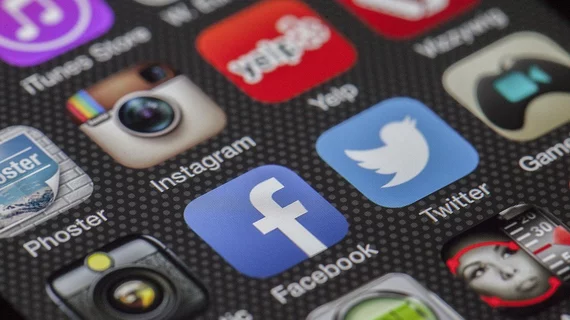Social media platforms take a lot of heat, and many times it is well deserved. But these powerful tools can also connect people across the world and help spread valuable information.
This was the case for radiology, as providers took to Twitter en masse during the start of the pandemic, researchers reported Sunday. In fact, in the early weeks of March, new users flocked to COVID-19 conversations using the hashtag #radiology and soon after, more were tweeting about the novel virus than were not.
A majority of the shared links were clinical and included webinars, informational sites and journal articles. This easy access to information is particularly important to the average radiologist, who has trouble keeping up with the latest literature and guidance, Maegan K.G. Lazaga, MD, with the Ohio State University Wexner Medical Center, and colleagues explained.
“Radiology departments have played an integral role in the COVID-19 pandemic, particularly for diagnosis during the early months of 2020 when rapid testing was not readily available,” the authors added Feb. 7 in Current Problems in Diagnostic Radiology. “This study demonstrates the influence of social media on rapid information dissemination evidenced by the influx of new users to the COVID-19 #radiology conversation … around the time when the WHO declared a global pandemic.”
For their research, the authors used a healthcare analytics tool to gather all tweets with the hashtag #radiology between Feb. 1 and Dec. 31, 2020. They rounded up 68,172 tweets from 2,809 users, with more than 10,000 containing COVID content. Below are a few additional findings.
- Physicians made up the majority of users (48%), authoring the most tweets (40%) and retweets (51%).
- Out of the 65.5 million-plus impressions, nonclinical healthcare organizations garnered the largest share at 20,235,547.
- Across 80 countries, the United States produced the most tweets (29%) followed by the U.K. (9%). Globally, a little more than 35% of users’ locations remained unknown.
- During the week of March 14, COVID-19 made up 55% of the hashtag #radiology discussion tweets compared to 14% during the remainder of the study. And in the week after that, such tweets accounted for more than 64% of impressions compared to 17% during the rest of the year.
Importantly, Lazaga et al. warned that medical decisions should not be made solely based on social media content, but they did find a large percentage of tweets included links to academic studies on how to diagnose the novel virus.
“Real-time sharing and collaboration proved a useful tool during the ongoing global pandemic providing a means for rapid global information dissemination crucial to giving patients up-to-date methods in diagnosing and managing an emerging and unknown pathogen,” the authors concluded. “The role of social media platforms, such as Twitter, will likely remain key in international collaboration for future pandemics.”

